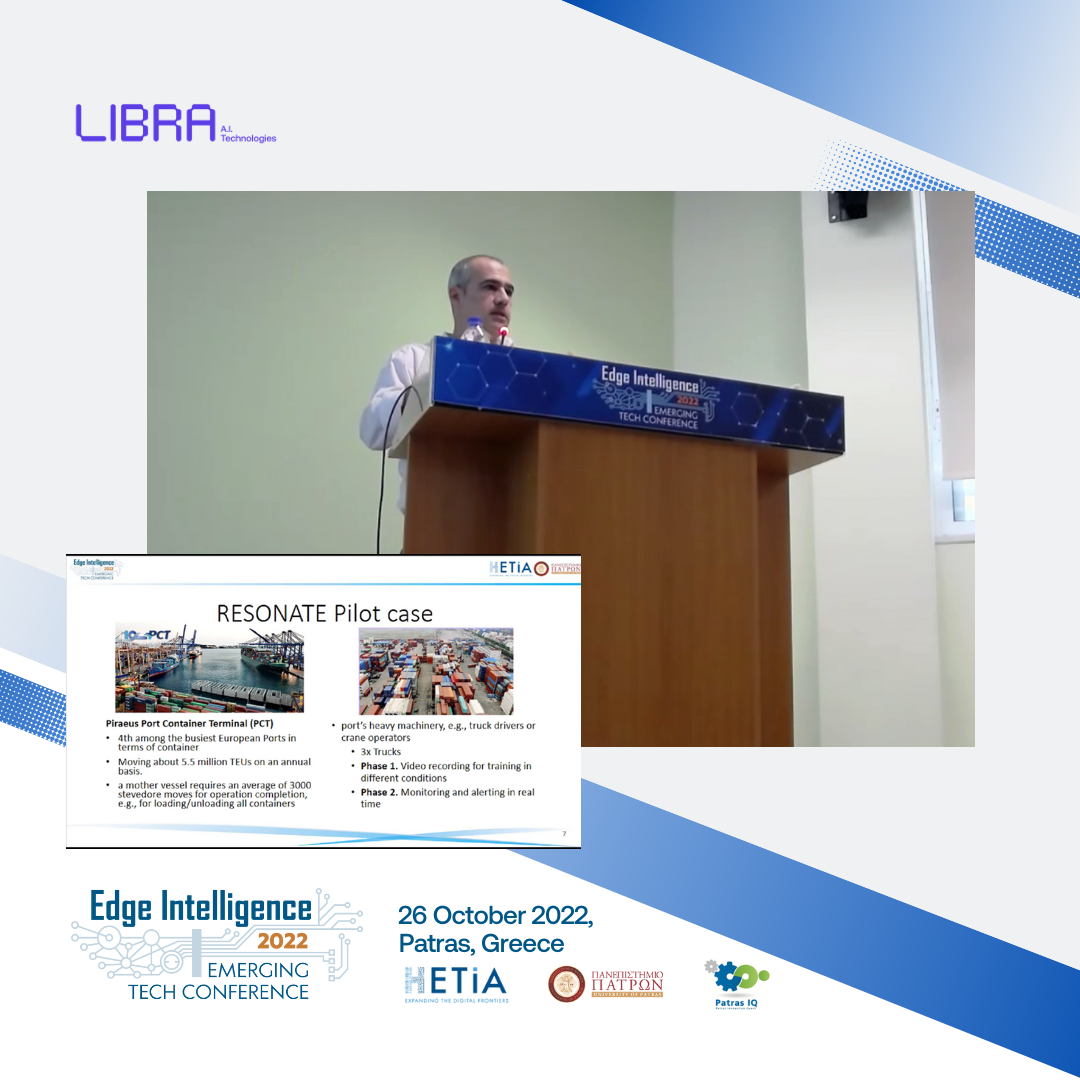Distracted and fatigued driving is the number one factor contributing to the global increase in commercial vehicle accidents. Currently, different methodologies focus on combining drowsiness detection technologies and Machine Learning.
LIBRA AI Technologies' proposes a computer vision-based solution for detecting drowsiness based on a video feed of the driver's face. The latter helps monitor a driver's fatigue condition in real time. The system is based on a hybrid approach, combining the decision of far-edge and near-edge submodules to detect the drowsiness signs of the truck driver. According to the drowsiness level, the system will trigger an alert, e.g., by sounding an alarm that will be installed in the truck's cabin. The RESONATE solution excelled at the 5GLOGINNOV Open Call for Start-Ups and is currently implemented in the Piraeus Container Terminal (PCT) as part of the project's Athens Living Lab activities.
The RESONATE system architecture and components were shortly presented in a peer-reviewed technical paper and were presented by the LIBRA AI CEO, Yannis Kopsinis, during the ETCEI 2022 Conference, in Patra on October 26th, 2022. The Conference organized by HETIA in collaboration with the University of Patras aimed to highlight the synergies and results of the cooperation between research and business sectors in cutting-edge technology fields, emphasizing mature research results and developments.
According to the highlights presented in the technical paper, the proposed solution:
- provides a low-cost solution for drowsiness detection that can be applied in heavy machinery fleets.
- alerts the operator in less than 2 seconds from the drowsiness incident.
- respects privacy since no video stream is recorded or transmitted outside the vehicle.
In addition, the RESONATE solution provides a central data repository that enables an advanced reporting system (particular distraction and drowsiness KPIs) that will offer a 360ο view of the alertness of the fleet playing a critical role in decision-making to reduce the possibility of drowsiness-induced accidents further.
For more information:
- Discover the technical paper results.
- Check out the paper presentation slides.

